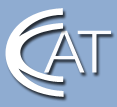Explore high-paying careers in clean, high-tech Connecticut manufacturing.

Educators: Externships
Work-based Learning Projects for the Classroom
Title: Radioactive Rescue (Creating a Robot)
Name of NGM Educator: Doug Couture, Technology Education and Project Lead the Way, Montville High School, Montville, CT
|
Name of Host Company: Whitcraft
|
Grade Level: 9 - 12th
|
Student Work Types: - Journal: Students will be expected to keep an engineering journal during their project. Pictures, CAD drawings, brainstorming ideas, sketches, and daily summaries will be expected to be part of each groups engineering journal. -Company Visit: Students will visit Whitcraft to see how the engineering process is done at the facility. -Competition: Students will compete in a competition in which the team will be judged on organization, cooperation, and the how many “radioactive” pieces their robot can clean up from the playing field. -Presentation: Students will be expected to relate their experience in the engineering design and manufacturing process with what they witnessed at Whitcraft using pictures, journals, and sketches done throughout the project in a final presentation. |
Task Abstract: Students will use the engineering design process to design, fabricate, and test a robot that will solve a given task. Each group will use a variety of technological tools to accomplish this goal. After the competition the students will do a presentation about their experiences using the engineering design process to build the robot. |
Task Objectives
|
Esssential Understandings/Questions:
|
Task Description: In this particular work based learning project, I plan on grouping my students into teams to plan, design and construct a robot that will be able to collect “radioactive” parts in another room by remote control and a video feed. Since the parts are radioactive, the students will only be able to control the robot by remote camera in another room. They will follow much of the design and teaming process that I witnessed at Whitcraft.They will also use the engineering design process. Each group of three students will start with a D1 meeting (as seen at Whitcraft) and use the Smartboard to capture their ideas, sketches, and pictures into a document. Each group will then come up with a plan, draw up preliminary sketches and CAD drawings of the robot and then construct the robot out of materials provided. During the competition each team will be required to assign each member a role (i.e. engineer, mechanic, machinist, driver). Students will take videos, pictures, sketches, CAD drawings, and writings and assemble the documentation in an engineering notebook. The use of a Gantt chart will also required from each group to schedule each phase of the project. The team that collects and removes the most “radioactive” parts in the span of five minutes will win the competition. The competition itself will be only worth 10% of the grade. The engineering notebooks and presentations will account for the other 90% of the grade. This will encourage each team to concentrate on the notebook and presentation. |
Resources Required: Smartboard, computers, CAD software, motors, 1/8” sheet metal, plywood, micro switches, Vex controller, various nuts and bolts, batteries, drill press and drill bits, band saw, sheers. |
Prior Learning Required: Use of Smartboard, Basic shop safety, Use of tools. |
| Context within which work is produced:
The work will be produced in a shop setting with the use of a computer lab. |
Individual or Group Work: Group work. Three students per team.
|
| Special Needs: Students will be placed in mixed ability groups |
Educator Comments: This project will hopefully teach my students that the engineering design process is important in manufacturing. I’m hoping that I can arrange a field trip to Whitcraft so that my students can witness the design process first hand and see it in action in the “real world” and to understand that the projects they do in school will prepare them for future employment. I think I can also use this template in some of the other projects I do in class so that students are better prepared for collaborating with fellow workers in a manufacturing environment. |





